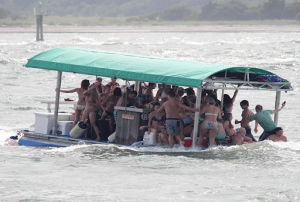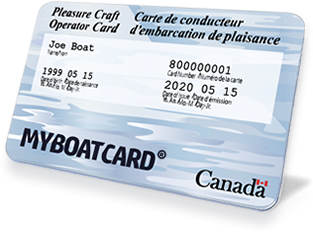Overloading
 Most boating fatalities are the result of capsizing or falling overboard. Overloading, shifting of cargo, and passenger movement on smaller craft contribute to most of the capsizing or falls overboard.
Most boating fatalities are the result of capsizing or falling overboard. Overloading, shifting of cargo, and passenger movement on smaller craft contribute to most of the capsizing or falls overboard.
Too much weight will make your boat unstable and allow waves to come on board and swamp your boat.
To avoid this, the operator of a pleasure craft should:
- Not overload the craft in excess of the recommended gross load capacity or the equivalent maximum number of adult persons;
- Position passengers and gear so as to distribute the weight evenly;
- Keep the cargo’s center of gravity as low as possible on board the craft or stow it in lockers to prevent it from shifting; and
- Be familiar with your craft’s limitations and handling.
Overloading is dangerous! The number of persons that can be carried safely depends on its type, the distribution of occupants, and the equipment carried. As the operator, you must obey the loading limits indicated on your vessel’s compliance notice.
These are indicated as either the recommended gross load capacity or the equivalent number of adult persons. The maximum load on a compliance notice refers to the total weight of persons, gear, equipment, supplies, fuel and motor assembly. Keep in mind that the maximum load is calculated for fair weather conditions and should be reduced for poor weather conditions.
A vessel is less stable and more likely to capsize when it is overloaded or overpowered.

